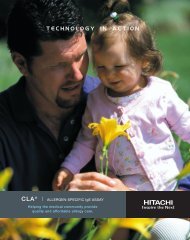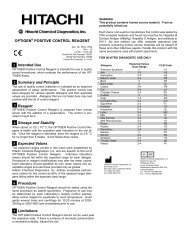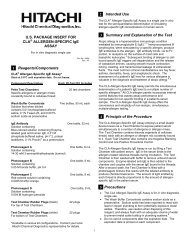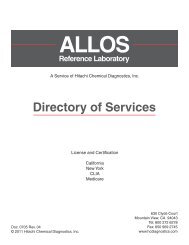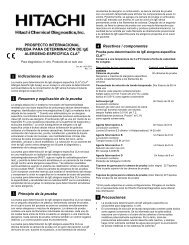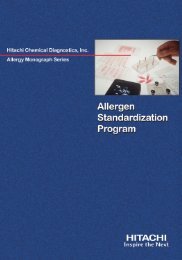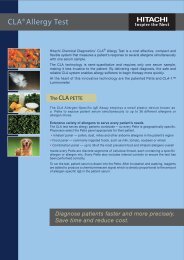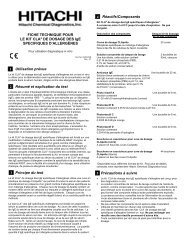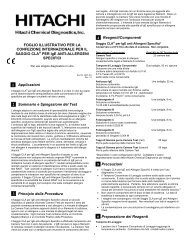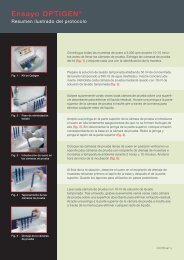Allergen Resource Guide - Hitachi Chemical Diagnostics
Allergen Resource Guide - Hitachi Chemical Diagnostics
Allergen Resource Guide - Hitachi Chemical Diagnostics
You also want an ePaper? Increase the reach of your titles
YUMPU automatically turns print PDFs into web optimized ePapers that Google loves.
<strong>Resource</strong> <strong>Guide</strong> to the Most Common <strong>Allergen</strong>s<br />
Common Name: Squash Mix<br />
Mix Includes: Zucchini (Cucuribita pepo), Acorn Squash (Cucuribita pepo) and<br />
Banana Squash (Cucuribita maxima)<br />
NCCLS Code: N/A<br />
Description: Squash is from the Gourd (Melon) family. Other members of this family<br />
include cantaloupe, casaba, Chinese watermelon, citrus melon, cucumber,<br />
gherkin, honeydew melon, Persian melon, pumpkin, summer squash,<br />
watermelon and winter squash.<br />
<strong>Allergen</strong>ic Proteins (with molecular weight):<br />
30 - 43 kDa<br />
In-House Clinical Evaluation Results:<br />
Sensitivity: 100% Specificity: 100%<br />
Efficiency: 100% Number of Samples: 25<br />
Common Name: Clam<br />
Latin Name: Tapes philippinarum<br />
NCCLS Code: F207<br />
Description: Clam is a member of the Mollusks family. Other members include<br />
abalone, cockle, mussel, octopus, oyster, quahog, scallops, snail<br />
(escargot) and squid.<br />
<strong>Allergen</strong>ic Proteins (with molecular weight):<br />
30 - 37 kDa<br />
In-House Clinical Evaluation Results:<br />
Sensitivity: 100% Specificity: 91%<br />
Efficiency: 95% Number of Samples: 21<br />
Common Name: Mushroom<br />
Latin Name: Pleurotus ostreatus<br />
NCCLS Code: F212<br />
Description: Mushroom is a member of the Fungi family. Other members include truffle<br />
(edible fungus growing under ground) and yeast. More than 13 varieties<br />
of mushrooms exist. The most common include Button, Shiitake,<br />
Common, Straw, Oyster and Enokitake. All varieties of edible mushrooms<br />
have the same antigenic protein. The amount of proteins in all<br />
mushrooms depends on the stage of body ripening.<br />
<strong>Allergen</strong>ic Proteins (with molecular weight):<br />
Different varieties are approximately 17 - 22 kDa and 44 - 46 kDa<br />
In-House Clinical Evaluation Results:<br />
Sensitivity: 94% Specificity: 100%<br />
Efficiency: 96% Number of Samples: 20<br />
15



